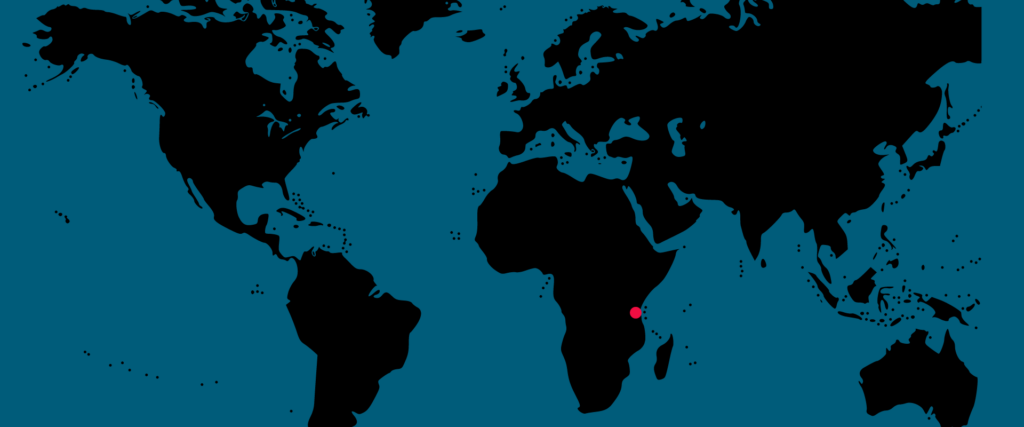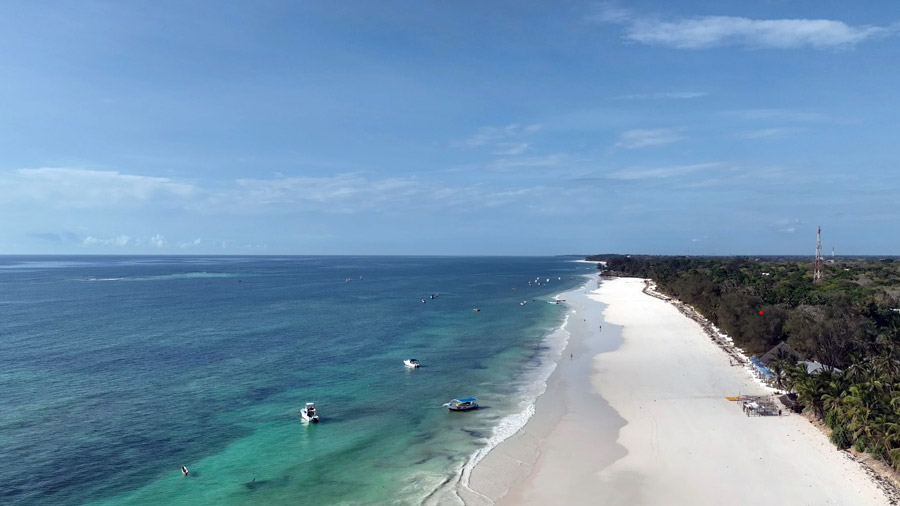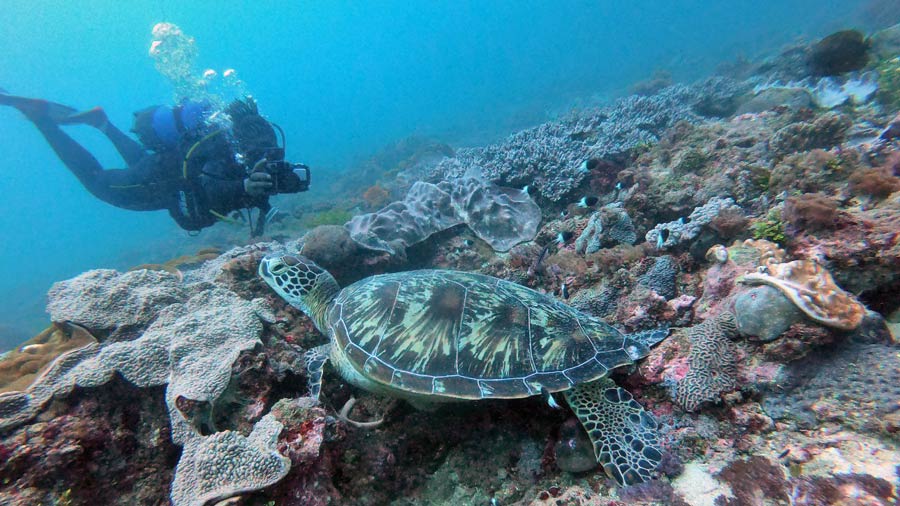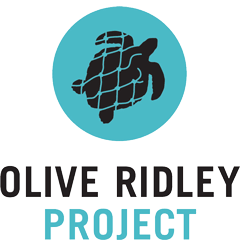
Most of the seven remaining sea turtle species are threatened with extinction. This matters, because sea turtles are a keystone species which help maintain ocean health by sustaining fish populations, preserving coral reefs, and preventing seagrass meadows from overgrowing and dying. Protecting them means protecting marine habitats and the coastal communities that depend on them – and by extension, the ocean that our own survival depends on.
Kenyan waters are home to five species of sea turtles with greens and hawksbills being the most commonly sighted. They frequently nest on many of Kenya’s beaches, where local organisations protect females and their nests during the breeding season. Yet, little is known about their foraging habitats, developmental grounds, or migratory routes beyond Kenya’s waters. This knowledge gap makes it harder to understand the threats they face and to design effective conservation strategies.
About ORP – Kenya
Our journey in Kenya began in 2018 with just one team member and a mission to protect sea turtles and their habitats in the Diani-Chale Marine National Reserve along the south coast of Kenya. What started with simple monitoring dives and small-scale education sessions has since grown into a dedicated team driving impactful long-term research, community outreach, and conservation education programmes along Kenya’s south coast. In 2024, we became a registered NGO in Kenya (NGO-EPFPJ6), with our headquarters in Diani Beach.
Our vision is a world where sea turtles can roam free from human induced threats.
Main activities and objectives

We take a multi-faceted approach to protecting sea turtles and their habitats, rooted in the One Health model, recognising that animal health, ecosystem health, and human wellbeing are deeply connected. This approach allows us to promote healthier oceans and better outcomes for sea turtles, and for people. In Kenya, we focus on two interconnected areas:
- Sea turtle monitoring
- Educational outreach
Sea turtle monitoring

Every conservation effort begins with understanding. For sea turtles in Kenya, vital questions remain:
- How are populations are structured?
- Where do they forage and migrate?
- What threats do they face, and where?
Without this knowledge, we cannot design effective strategies to protect them. That’s why our work starts with gathering reliable data: mapping their habitats, tracking their movements, and uncovering the threats they face. Each piece of information brings us closer to safeguarding sea turtles and the ecosystems they – and we – depend on.
We use a range of techniques to monitor sea turtles in the Diani-Chale Marine National Reserve (DCMNR). These include Photo-ID surveys while scuba diving and snorkelling, as well as aerial surveys with drones.
Our sea turtle monitoring objectives are to:
- Understand the size, structure, and movement patterns of Kenya’s sea turtle populations
- Map high-priority conservation areas
- Identify key threats in the reserve
- Develop targeted research and conservation strategies
In the long-term, we aim to expand into additional marine protected areas, strengthen nationwide conservation through community partnerships, and ensure Kenya remains a safe haven for sea turtles. Our findings are shared with both local, national, and international audiences.
Our sea turtle monitoring achievements and impact
Identified over 700 green turtles and nearly 100 hawksbill turtles in DCMNR
Catalogued key sea turtle foraging areas in the reserve
Detected fibropapillomatosis (FP) disease in around 13% of identified green turtles
Published and contributed to seevral research papers, including:
- ‘Using Photo-ID to document and monitor the prevalence of fibropapilloma tumours in a foraging aggregation of green turtles‘
- ‘Photo Identification as a Tool to Study Sea Turtle Populations in Kenyan Marine Protected Areas‘.
Expanded monitoring into seagrass and mangrove habitats to better understand habitat use
Educational outreach
Lasting change is only possible when local communities are part of the solution. Our education programmes raise awareness and build practical skills in marine conservation, with a strong focus on community-led initiatives.
Activities include:
- Internships for graduates in related fields
- Student attachment programmes with partner universities
- Educational festivals and community events
- Workshops for schools, youth groups, and other stakeholders
- Citizen science projects with local dive centres
- Long-term collaboration with fishing communities through the Balozi wa Kasa (Sea Turtle Ambassadors) Programme
- Trials of bycatch mitigation strategies with local fishers
Our goal is to strengthen knowledge of sea turtle distribution, threats, and habitats, while inspiring grassroots action to protect sea turtles. At the same time, we are developing replicable models for community-led conservation that can be scaled across Kenya’s coastline.
Our educational outreach achievements and impact
Launched the Balozi wa Kasa (Sea Turtle Ambassador) Programme in collaboration with 9 fishing communities in Kwale county
Certified 129 Sea Turtle Ambassadors
Empowered Sea Turtle Ambassadors to teach their peer about sea turtles, record bycatch events and test mitigation solutions
Trained 5 interns through our internship programme, including one who is now employed full-time with us as a sea turtle biologist
Mentored 8 students through our attachment programme
Welcomed hundreds of children and stakeholders to celebrate the annual Diani Sea Turtle Festival
Collaborators & funders
Our work in Kenya is made possible through strong collaborations with partners such as Conservation Education Society (CES), Bahari Hai (BH), IFAW, Shimoni Turtle Watch (STW), Biosciences Research Centre (PUBReC) at Pwani University, Kenyatta University, and the Technical University of Mombasa to facilitate our activities with invaluable support from Kenya Wildlife Service, Wildlife Research and Training Institute, and Kenya Fisheries Service.
Long-term allies Diving the Crab and Ocean & Reefs, continue to play a key role, alongside newer partners and funders including Pacsafe, SEE Turtles, Animal Saviours, Ocean Culture Life, Msambweni Beach House, Oceanic Society, and SWOT.
We are deeply grateful to our individual donors, sea turtle adopters, and citizen scientists whose contributions are instrumental to our success. Your support is the backbone of our success.

